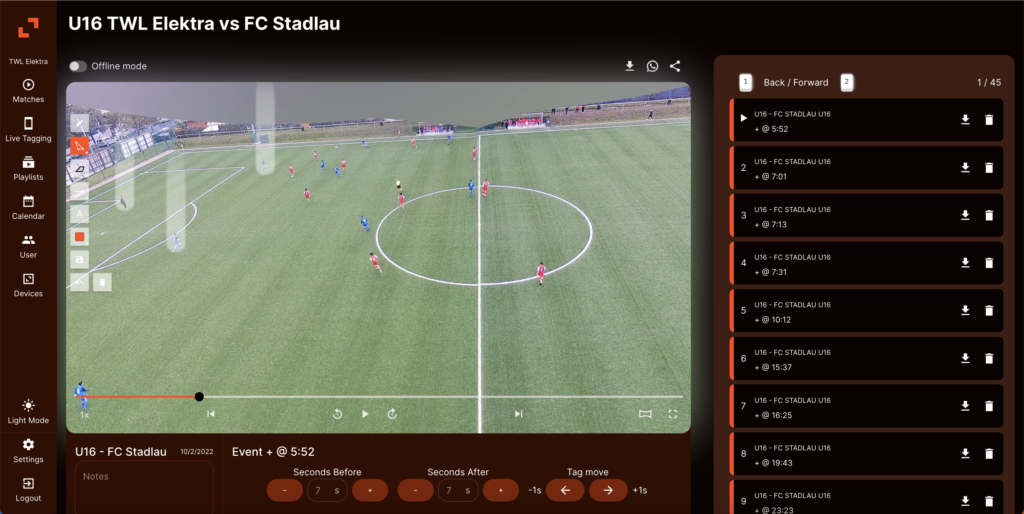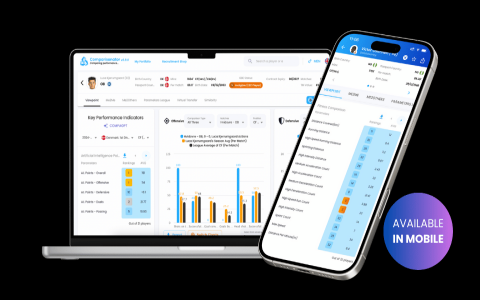Modern coaching staffs and performance departments live or die by the quality of their data. But raw numbers only become match-winning insights if they are captured, filtered and presented in an intuitive way. That’s why choosing the best soccer analysis software is no longer a luxury reserved for elite clubs; it’s a competitive necessity at every level of the game. Below you’ll find a concise, field-tested review of the seven most powerful platforms available today, together with selection criteria you can apply immediately, regardless of budget or squad size.
1. Hudl Sportscode
Best for: Custom scripting, real-time tagging, halftime adjustment power
Key strengths: Live coding panel, unlimited code windows, integrated drawing & telestration, cloud library accessible from any device. Used by the majority of Champions-League-level analysts, the tool rewards users who invest time mastering its scripting language to trigger automated workflows (e.g., automatically clip every final-third turnover and push them to an iPad on the bench).
2. Wyscout Analysis Platform
Best for: Global video & event database, opponent pre-scout, recruitment overlay
Key strengths: 2,000+ new matches added per week, event data coded within four hours of full time, side-by-side statistical radar for player comparison, integrated messaging with agents. Coaches can instantly pull every clip of an upcoming winger to see how he performs against low-block defenses.
3. StatsBomb IQ
Best for: Event data depth, predictive models, women’s & youth analytics
Key strengths: Unique metrics such as “Pressure” and “Shot-Create Action,” expected threat (xT) surface, bespoke model building dashboards. Academies value the women’s data set (historically under-represented) that now spans 20 top leagues.

4. Catapult Vision (formerly Focus)
Best for: Physical-to-tactical fusion, wearable integration, athlete management
Key strengths: Sync high-frame-rate tactical video with GPS, heart-rate, and inertial data; auto-detect high-speed running during transition moments; create individual athlete reels showing both positioning and metabolic load.
5. Nacsport
Best for: Budget-friendly yet scalable, beginner to intermediate analysts
Key strengths: One-time licence tiers (Basic, Pro, Elite), intuitive timeline review, Klip-Drawing 3D telestration, optional cloud review portal. A grassroots club can start at roughly $250 and upgrade only when the analysis department grows.
6. PIERO from RT Software
Best for: Broadcast-grade graphics, TV-style analyst presentations
Key strengths: Augmented 3D replays, offside line technology, heat-map rendering in real time. Perfect for media-savvy coaches who must explain tactics to boardrooms, fans or players in an engaging, visual language.
7. DFL Datahub (via Opta)
Best for: Proprietary European tracking data, academic research
Key strengths: Full player skeleton position data (25 Hz), licenses available for university partnerships, compatible with Python & R libraries for machine-learning projects. Ideal for clubs with dedicated data-science staff.
How to Select the Right Tool
Step 1: Clarify your objectives
Match analysis? Recruitment? Medical monitoring? Media content? Ranking priorities eliminates “feature bloat” regret.
Step 2: Audit current hardware & staff skills
A 4-GPU workstation running Sportscode scripts is wasted on a single-analyst set-up using 2015 laptops. Pick software that matches current bandwidth but offers API expansion later.
Step 3: Evaluate total cost of ownership
Price the full workflow: not just licence fees but cloud storage, tutorial time, potential coder hire, hardware upgrades, and athlete education hours.
Step 4: Test interoperability
Can the data feed be exported as XML, CSV, JSON? Does the tool integrate with your GPS provider, the league’s official data supplier, or Tableau/PowerBI?
Step 5: Secure athlete buy-in
A platform that looks “too scientific” will sit unused. Ensure players receive clips automatically on their phones, ideally with five-line coaching notes and voice-over.
Emerging Trends to Watch
• AI-assisted auto-tagging: Computer vision models now identify pressing traps, line-breaking passes and even micro-gestures of body orientation (hip rotation) with 85-90 % accuracy, cutting manual tagging time by 40 %.
• Multimodal dashboards: Merging event data, tracking data, wellness surveys and sleep metrics into a single “tactical-physical index” helps staff see who is tactically sharp but physically at risk and vice-versa.
• Augmented-reality headsets: Pilots at Bayern Munich and AFC Ajax let coaches replay 3D freeze-frames on the training pitch overlayed through AR spectacles, reducing meeting-room time and improving kinesthetic learning.
• Federated learning: Academies can pool anonymized patterns (e.g., pressing trajectories) without sharing proprietary raw video, accelerating algorithm training while satisfying privacy regulations like GDPR and CCPA.
Take-Action Checklist
⊗ Identify one “quick-win” question your staff asks every week (e.g., “Where are we losing second balls?”).
⊗ Trial at least two software demos—one focused on video, one on data—to compare speed from question to insight.
⊗ Measure time-to-clip: the seconds required to generate, export and deliver a sequence to the head coach’s tablet. Anything over three minutes will likely kill adoption.
⊗ Document an SOP (Standard Operating Procedure) outlining who codes, who checks, who distributes, and who archives files; a brilliant tool fails without workflow discipline.
⊗ Re-evaluate every six months; the market evolves rapidly and last year’s “best soccer analysis software” can quickly be overtaken.
Making the final decision feels daunting, but follow the disciplined framework above and you’ll secure a platform that turns raw Saturday-afternoon chaos into Sunday-morning clarity—giving your players the one thing they crave most: a winning edge.







































